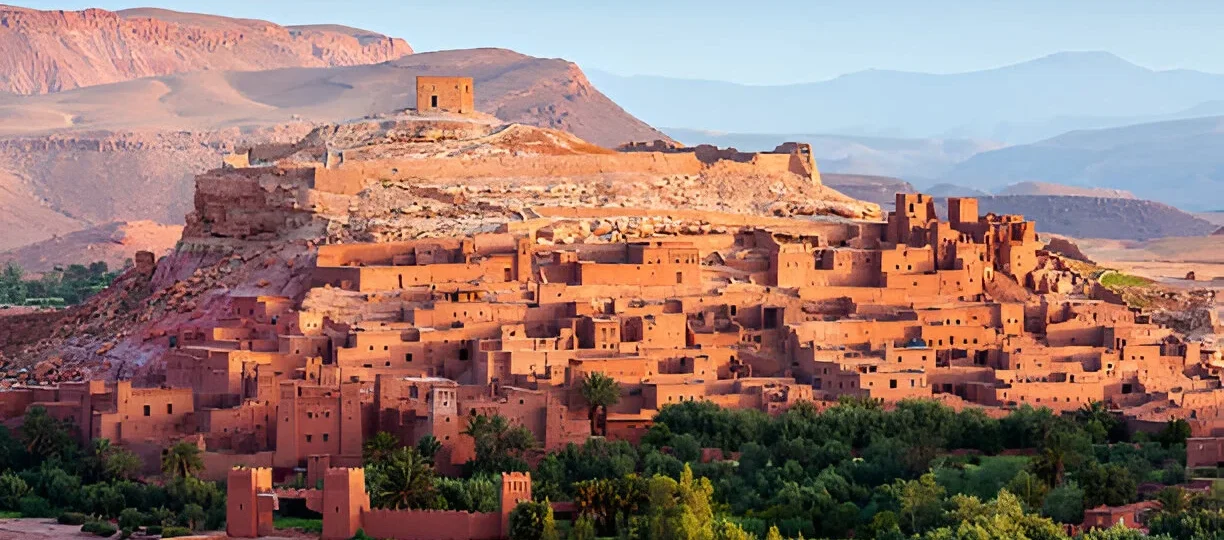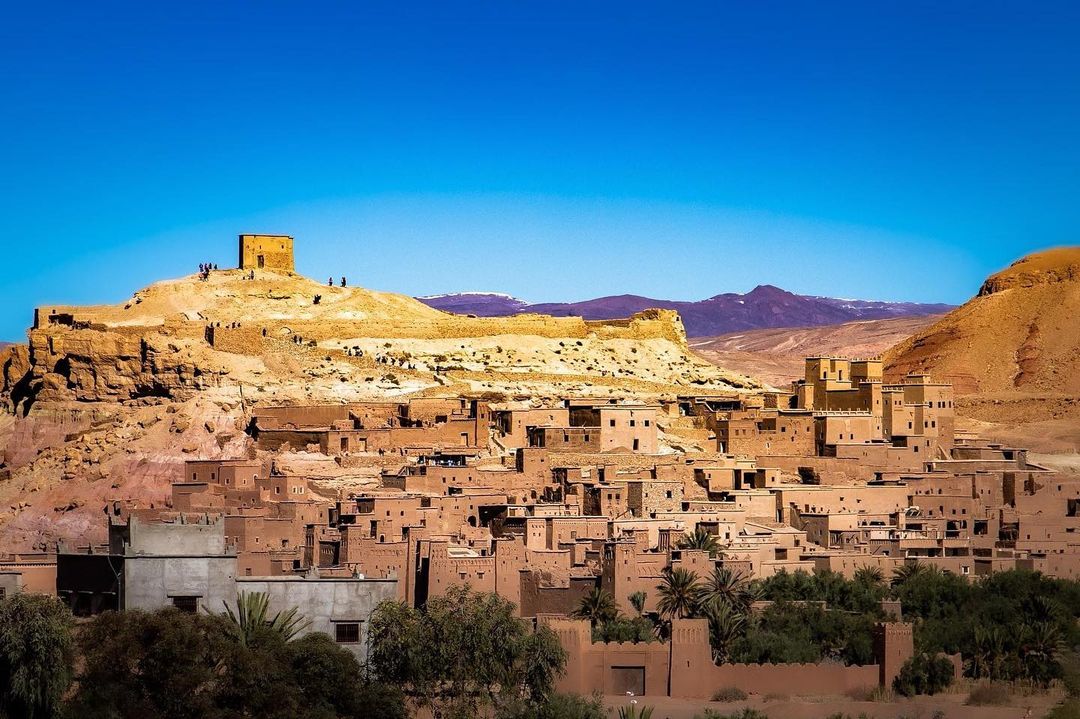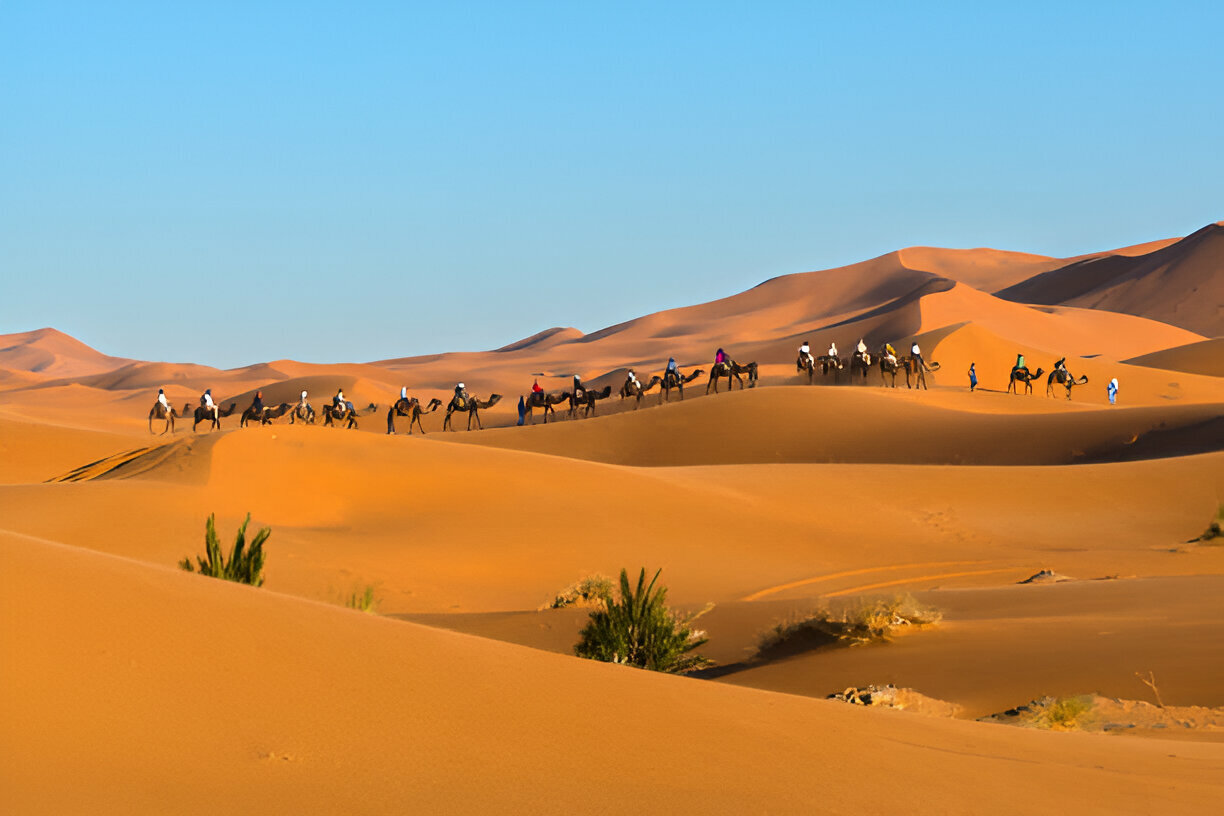Morocco group tours are organized travel experiences that allow visitors to explore Morocco’s diverse landscapes, historic cities, and cultural sites as part of a guided collective. These tours provide structured itineraries with professional guides, transportation, accommodations, and often include meals and entrance fees. Group tours in Morocco are important for travelers seeking hassle-free exploration with expert guidance and social interaction.
There are five main types of Morocco group tours. Cultural tours focus on historical sites, medinas, and traditional experiences throughout major cities like Marrakech, Fes, and Chefchaouen. Desert expeditions explore the Sahara and nearby areas, featuring camel treks and overnight desert camping. Mountain tours traverse the Atlas Mountains with hiking opportunities and visits to Berber villages. Coastal tours explore Atlantic shorelines and historic port cities like Essaouira. Specialized tours cater to specific interests such as photography, culinary experiences, or women-only travel groups.
To plan effective Morocco group tours, first determine your preferred travel style, whether that’s budget-friendly backpacker tours, mid-range experiences, or luxury excursions. After choosing your travel style, research seasonal considerations as Morocco’s climate varies dramatically by region and season. When preparing for your trip, ensure you have all necessary documentation including passports, visas if required, and travel insurance. Popular options include cultural tours to imperial cities, day trips from Marrakech to nearby attractions, desert tours from Marrakech to Fes exploring the Sahara, and specialized tours focusing on photography, cuisine, or wellness. You can book through international tour operators offering comprehensive packages or local Moroccan agencies providing authentic experiences with deeper local connections.
What are Morocco Group Tours?
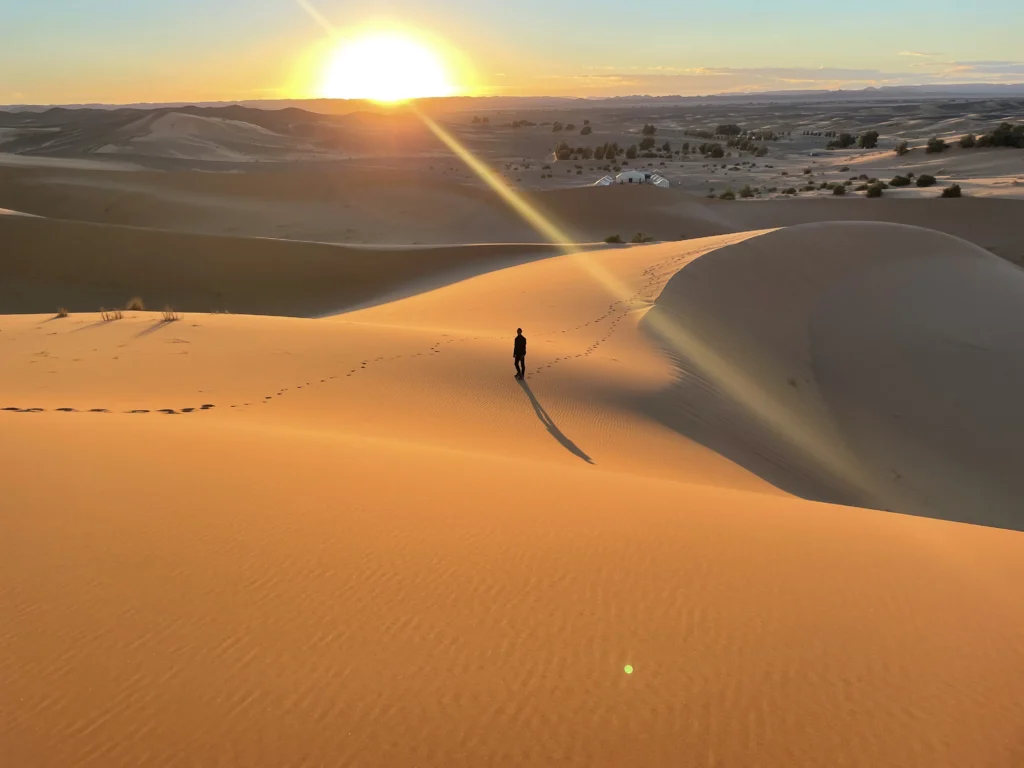
Morocco group tours are pre-arranged travel experiences where individuals join a collective of travelers to explore Morocco’s diverse attractions with guided expertise. These tours typically include 8-20 participants led by professional guides who handle logistics, provide cultural insights, and ensure a smooth travel experience. Group tours operate with set itineraries covering major attractions and hidden gems across Morocco’s varied regions, with transportation provided in air-conditioned vehicles ranging from minivans to coaches depending on group size.
Taking Morocco group tours offers numerous benefits for travelers. They eliminate planning stress by handling complex logistics including transportation between distant locations, accommodations in each destination, and navigating language barriers. They provide cultural insights through knowledgeable guides who offer historical context and cultural explanations that independent travelers might miss. Group tours often secure access to authentic experiences like family dinners in local homes, traditional craft demonstrations, and cultural performances. They also offer built-in companionship for solo travelers or those who enjoy social interaction during their journeys.
Standard group tours follow fixed itineraries with set departure dates, typically accommodating 12-20 travelers with competitive pricing due to group discounts. These tours use standard accommodations and include major attractions with some free time for personal exploration. Small group tours limit participation to 4-12 travelers, offering a balance of structure and flexibility with higher-quality accommodations and more personalized attention from guides. They access smaller restaurants and accommodations that can’t host larger groups. Private group tours allow pre-formed groups like families, friends, or special interest clubs to customize itineraries while maintaining group tour benefits. They offer complete flexibility with departure dates, preferred accommodations, and activity modifications based on group interests.
Examples of popular Morocco group tours include imperial city circuits featuring Marrakech, Fes, Meknes, and Rabat showcasing Morocco’s royal history through palaces, gardens, and historic medinas. Sahara expeditions travel from Marrakech or Fes to the golden dunes of Erg Chebbi or Erg Chigaga with desert camping experiences. Grand tours of Morocco provide comprehensive 10-14 day journeys covering coastal, mountain, desert, and urban environments for complete country exploration. Specialized thematic tours focus on Moroccan cuisine with cooking classes and market visits, photography with expert instruction at photogenic locations, or trekking adventures in the Atlas Mountains with varying difficulty levels.
What are the Types of Morocco Group Tours
Morocco group tours are organized travel experiences where visitors join a small to medium-sized collective to explore Morocco’s highlights with professional guidance and pre-arranged logistics. The 5 types of Morocco group tours are:
- Cultural and Historical Tours: These journeys focus on Morocco’s imperial cities (Marrakech, Fes, Meknes, Rabat), ancient medinas, architectural treasures, and traditional crafts, typically lasting 7-10 days with emphasis on historical sites and cultural immersion.
- Desert Expeditions: Focusing on Morocco’s iconic Sahara experience, these tours feature camel trekking, overnight desert camping in traditional tents, stargazing, and visits to desert-edge towns like Merzouga and Zagora, commonly operating between Marrakech and Fes or as trips from Marrakech.
- Mountain and Nature Tours: Centered around the Atlas Mountains, these active tours include hiking opportunities from gentle walks to challenging treks, visits to Berber villages, and exploration of natural features like Ouzoud Waterfalls and Dades Gorge.
- Coastal Exploration Tours: These journeys highlight Morocco’s 1,200 miles of Atlantic coastline, visiting historic port cities like Essaouira and Asilah, with activities including seafood dining, water sports, and exploring Portuguese-influenced coastal architecture.
- Specialized Interest Tours: Catering to specific passions, these include photography tours with expert guidance at photogenic locations, culinary tours featuring cooking classes and food market visits, women-only tours focusing on female artisans and hammam experiences, and spiritual tours exploring Morocco’s religious heritage.
Type 1: Cultural and Historical Tours
Cultural and historical tours in Morocco are guided expeditions focused on exploring the country’s rich heritage, architectural treasures, and living traditions across its historic cities and settlements. These tours emphasize visits to UNESCO World Heritage sites, ancient medinas, palaces, religious structures, and cultural institutions that showcase Morocco’s 1,200+ years of recorded history. The most popular cultural tour route is the Imperial Cities circuit connecting Marrakech, Fes, Meknes, and Rabat, each having served as Morocco’s capital during different historical periods.
A typical cultural tour includes exploring Fes El Bali, the world’s largest car-free urban area with its 9,000+ narrow derbs (alleys), where visitors witness traditional artisans using centuries-old techniques in the leather tanneries, ceramic workshops, and metal foundries. Tours feature guided medina walks with expert explanations of architectural elements like intricate zellij tilework, carved cedar ceilings, and stucco detailing in madrasas (historic Islamic schools) and riads (traditional houses). Many include special access to restoration projects or private historical residences not open to independent visitors.
The benefits of cultural and historical tours include gaining deeper understanding of Morocco’s diverse influences (Berber, Arab, Jewish, Andalusian, French) through expert narration and context. These tours provide efficient navigation of complex historical sites while avoiding common pitfalls like getting lost in labyrinthine medinas or missing hidden architectural gems. They facilitate meaningful interactions with local cultural practitioners, artisans, and scholars who share their knowledge and traditions.
Tourism research indicates that cultural and historical tours represent approximately 65% of all organized group tours in Morocco, attracting an estimated 850,000 participants annually. Visitor surveys show that 94% of travelers rate the historical insights gained from professional guides as “extremely valuable” to their experience. Economic impact studies demonstrate that cultural tourism distributes visitor spending more widely throughout communities, with an average cultural tour participant contributing approximately 3,800 MAD ($380) daily to the local economy through accommodations, meals, artisan purchases, and site admissions. Archaeological data shows that popular sites like Volubilis (Roman ruins) receive over 1,500 visitors daily during peak season, with 70% arriving through organized cultural tours.
Type 2: Desert Expeditions
Desert expedition tours in Morocco are guided adventures that take visitors into the country’s iconic desert landscapes, primarily the Sahara but also including less remote desert regions like the Agafay. These tours focus on experiencing Morocco’s dramatic arid environments, traditional nomadic culture, and the natural wonder of massive sand dunes. The most popular desert expeditions are 3-day trips from Marrakech to Erg Chebbi near Merzouga, featuring overnight desert camping experiences and camel treks across golden dunes that can reach heights of 150 meters.
A typical Sahara desert expedition includes a multi-day journey (usually 3-4 days) across the Atlas Mountains, with stops at scenic points like Ait Ben Haddou kasbah and the Todra Gorge before reaching the desert frontier. Upon reaching the desert edge, travelers transfer to camelback for a 1-2 hour trek across the dunes to reach desert camps equipped with traditional nomad tents. Activities include sunset and sunrise camel rides, sandboarding on dunes, traditional Berber music around campfires, and unparalleled stargazing in the pollution-free desert sky. Many tours complete a circuit by continuing to Fes after the desert experience, rather than returning to Marrakech, making them popular as Marrakech to Fes desert tours.
Benefits of desert expedition tours include experiencing one of Morocco’s most iconic landscapes with proper preparation, equipment, and safety measures. These journeys provide authentic cultural interactions with desert communities and nomadic groups who have adapted to extreme environments for centuries. Desert tours offer unique photography opportunities with otherworldly landscapes, especially during golden hour when the dunes create a mesmerizing play of light and shadow.
Tourism statistics reveal that desert expeditions are the second most popular category of Morocco group tours, with approximately 580,000 participants annually. Weather data confirms optimal visiting periods of March-May and September-November when daytime temperatures average 25-30°C (77-86°F), compared to summer peaks exceeding 45°C (113°F) when tours operate with modified schedules. Industry figures show that 78% of desert tours operate as one-way journeys between Marrakech and Fes, maximizing efficiency by eliminating backtracking. Desert tourism has grown 34% over the past five years, with Instagram and social media being credited for 45% of new bookings according to operator surveys. Economic research indicates desert tourism creates approximately 5,800 jobs in transportation, guiding, camel handling, and desert camp operations across Morocco’s southern regions.
Type 3: Mountain and Nature Tours
Mountain and nature tours in Morocco are guided excursions that focus on the country’s diverse natural landscapes, primarily the Atlas Mountain range which extends nearly 2,500 kilometers across Morocco with peaks reaching 4,167 meters (13,671 feet) at Jebel Toubkal, North Africa’s highest summit. These tours emphasize outdoor activities, natural scenery, biodiversity, and rural Berber culture in mountain villages largely unchanged for centuries. Popular mountain tour destinations include the High Atlas near Marrakech, Middle Atlas near Fes, and Rif Mountains in northern Morocco, each offering distinct ecosystems and cultural experiences.
A typical mountain tour includes guided hiking excursions ranging from gentle 2-3 hour walks to challenging multi-day treks, depending on participants’ fitness levels and interests. Tours visit traditional Berber villages like Imlil, Armed, and Aremd, where visitors observe traditional agricultural practices and daily mountain life. Many include natural features like the Ouzoud Waterfalls (110-meter cascades surrounded by olive groves), cedar forests of the Middle Atlas (home to Barbary macaques), and dramatic gorges like Todra and Dades carved through ancient rock formations. Accommodations often include stays in mountain lodges or traditional guesthouses (gîtes d’étape) operated by local families.
The benefits of mountain and nature tours include escaping Morocco’s often intense urban environments and heat for refreshing mountain air and cooler temperatures (typically 10-15°C/18-27°F cooler than nearby cities). These tours provide access to outstanding biodiversity with over 4,000 plant species (600 unique to Morocco) and diverse wildlife observation opportunities. Mountain tours offer physical activity levels adaptable to different capabilities, from light walking to challenging ascents.
Ecotourism research indicates that mountain tours have shown 28% annual growth over the past decade, with approximately 320,000 annual participants. Conservation studies demonstrate that responsible mountain tourism has contributed to protecting 15,000 hectares of native forest through sustainable tourism initiatives. Visitor surveys reveal that 89% of mountain tour participants rate interactions with Berber communities as their most memorable experience. Economic impact assessments show mountain tourism brings vital income to remote villages with limited economic opportunities, with an average mountain guide earning approximately 4x the regional mean income. Climate data confirms that mountain areas receive approximately 2-3x the rainfall of nearby lowlands, creating microenvironments with distinctive flora and fauna that specialized nature tours highlight for participants.
Type 4: Coastal Exploration Tours
Coastal exploration tours in Morocco are guided journeys that focus on the country’s 1,200-mile Atlantic coastline, featuring historic port cities, fishing villages, beaches, and maritime cultural heritage. These tours emphasize Morocco’s often-overlooked coastal character, showcasing Portuguese and Spanish colonial influences, traditional fishing practices, and distinctive coastal cuisine and crafts. The primary coastal tour destinations include Essaouira, Asilah, Tangier, El Jadida, and occasionally Mediterranean coastal areas near Al Hoceima, each offering unique historical and cultural characteristics.
A typical coastal exploration tour includes guided walking tours of fortified coastal medinas like Essaouira’s UNESCO-protected ramparts built in the 18th century, showcasing distinct blue-and-white coastal architecture. Tours feature visits to working fishing harbors where wooden blue boats unload daily catches that supply local seafood markets and restaurants. Many include cultural elements like visits to artisan workshops specializing in coastal crafts such as thuya wood carving in Essaouira or maritime-themed art in Asilah. Free time allows for beach activities, water sports like windsurfing in Essaouira (known as “Wind City of Africa”), or horseback riding along stretches of undeveloped coastline.
The benefits of coastal exploration tours include experiencing Morocco’s dramatic seaside landscapes and maritime heritage that contrasts sharply with inland desert and mountain environments. These tours provide relief from extreme temperatures found elsewhere in Morocco, with coastal areas averaging 7-12°C (12-22°F) cooler than inland cities during summer months due to Atlantic breezes. Coastal tours offer unique culinary experiences focused on fresh seafood prepared with distinctively Moroccan spice combinations and cooking methods.
Tourism data shows coastal exploration represents approximately 18% of Morocco’s group tour market, with estimated annual participation of 230,000 visitors. Climate research confirms coastal areas maintain relatively consistent temperatures year-round, averaging 15-22°C (59-72°F) even when inland temperatures fluctuate dramatically. Visitor surveys indicate 76% of coastal tour participants cite “temperature comfort” as a primary motivation for choosing these itineraries, particularly during summer months. Economic studies demonstrate coastal tourism supports approximately 25,000 jobs in fishing, hospitality, guiding, and artisanal crafts in communities with historical dependence on maritime industries. Historical data shows Portuguese and Spanish colonial influences dating to the 15th-17th centuries created distinctive architectural styles and cultural practices that differentiate coastal settlements from inland Moroccan cities.
Type 5: Specialized Interest Tours
Specialized interest tours in Morocco are thematically focused group experiences designed around specific passions, hobbies, or demographics rather than geographic regions. These tours cater to travelers seeking in-depth exploration of particular aspects of Moroccan culture, traditions, or activities with like-minded participants and expert guidance. Popular specialized tours include photography tours led by professional photographers at visually stunning locations, culinary tours featuring cooking classes and food market explorations, women-only tours focusing on female artisans and traditions, and spiritual/wellness tours incorporating meditation, yoga, and traditional healing practices.
A typical photography specialized tour includes expert-led sessions at optimal times for capturing iconic locations like Chefchaouen’s blue streets, Sahara dunes at sunrise/sunset, and bustling souks with favorable lighting conditions. These tours feature small groups of 6-10 participants with technical guidance, composition advice, and post-processing workshops by professional photographers. Culinary specialized tours typically include market visits with chefs, hands-on cooking classes teaching traditional techniques, meals in private homes, and visits to food producers like argan oil cooperatives and spice farms. Women-focused tours often provide access to female-only spaces like traditional hammams, women’s cooperatives, and opportunities to learn about women’s roles in Moroccan society through interactions with female artisans, entrepreneurs, and community leaders.
The benefits of specialized interest tours include deeper immersion in specific aspects of Moroccan culture that align with participants’ passions. These tours attract like-minded travelers with shared interests, creating instant connections and meaningful social experiences. Specialized guides with expertise in the tour’s focus area provide insights and access that general tour guides cannot match.
Market research indicates specialized interest tours represent the fastest-growing segment of Morocco’s tourism industry, experiencing 42% annual growth over five years. Participant surveys show extremely high satisfaction ratings, with 96% of specialized tour participants rating their experience as “exceeding expectations” compared to 82% for general tours. Demographic analysis reveals that specialized tours attract repeat visitors to Morocco, with 68% of participants having previously visited the country on more general itineraries. Industry data shows specialized tours command premium pricing, averaging 35-60% higher rates than general tours of similar duration, reflecting their niche expertise and small group sizes. Economic impact studies demonstrate that specialized tours generate approximately 25% more local economic benefit per participant through focused shopping related to the tour theme, increased guide compensation for specialized knowledge, and participants extending their stays for further exploration of their interest areas.
What are the Steps to Planning a Morocco Group Tour
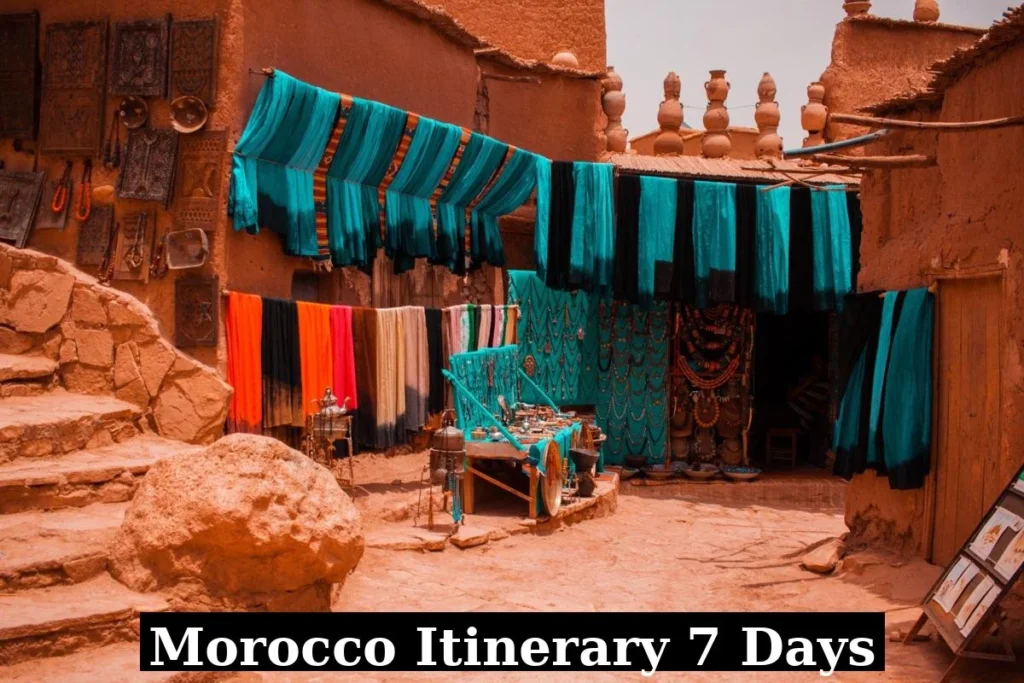
Planning a Morocco group tour means organizing a guided multi-day journey with other travelers to explore Morocco’s diverse attractions with shared transportation, accommodations, and experiences. Following are 7 essential steps to plan effective Morocco group tours:
- Choose Your Tour Type: Select between cultural/historical tours, desert expeditions, mountain adventures, coastal explorations, or specialized interest tours based on your primary travel motivations and interests.
- Select Tour Duration and Scope: Decide between shorter regional tours (3-5 days) focusing on specific areas like day trips from Marrakech or 3-day desert trips, versus comprehensive national tours (7-14 days) covering multiple regions connected by routes like Marrakech to Fes.
- Consider Group Size Preferences: Determine whether you prefer standard groups (15-25 travelers), small groups (6-12 travelers), or private group arrangements based on your desired balance of social interaction and personalized attention.
- Evaluate Tour Operators: Research companies offering Morocco group tours through review platforms, travel forums, and personal recommendations, comparing their safety records, sustainability practices, included features, and value propositions.
- Assess Inclusions and Exclusions: Carefully review what’s covered in tour pricing (transportation, accommodations, meals, entrance fees, activities) versus additional costs you’ll need to budget for separately.
- Check Seasonal Timing: Research optimal visiting periods considering Morocco’s diverse climate zones, festival calendar, and peak tourist seasons that affect pricing and availability.
- Prepare Necessary Documentation: Ensure you have required travel documents including passports valid for at least six months beyond your visit, travel insurance covering Morocco, and vouchers for your confirmed tour.
How to Choose the Right Morocco Group Tour Operator
Selecting the right tour operator for your Morocco group experience is a critical decision that significantly impacts your journey’s quality, safety, and value. The ideal tour operator should balance reliability, authenticity, and fair pricing while matching your specific travel preferences. Begin by verifying operator legitimacy through proper licensing and registration with Morocco’s Ministry of Tourism, which regulates official tour companies through a strict certification process.
Next, thoroughly research reputation through multiple review sources including TripAdvisor, Google Reviews, and travel forums where past customers share experiences. Look beyond overall ratings to read detailed reviews mentioning guide quality, accommodation standards, and how operators handle unexpected situations. Established operators with 5+ years in business typically have developed reliable supplier networks and refined their itineraries through customer feedback.
Tour itinerary design reveals much about operator quality. Look for balanced schedules that avoid excessive driving times (maximum 3-4 hours between stops) and include both major highlights and off-the-beaten-path experiences. Quality operators provide cultural context and meaningful local interactions rather than superficial tourist experiences. Transportation quality is particularly important in Morocco where journeys between destinations can be lengthy, so confirm vehicle standards, air conditioning, and maximum passenger counts.
Accommodation standards vary widely, so clarify specific properties used rather than vague category descriptions. Reputable operators can provide property names in advance. Guide quality fundamentally shapes your experience, with the best operators employing university-educated guides certified by Morocco’s official guide training program who speak fluent English and demonstrate deep cultural and historical knowledge.
Value assessment requires comparing inclusions rather than just base prices, as significant differences exist in meal inclusions, entrance fees, and optional activities. Local ownership often provides advantages through deeper community connections and more authentic experiences, with Moroccan-owned companies typically offering better value due to established supplier relationships and cultural insights.
Research indicates that 73% of Morocco tour satisfaction correlates directly to guide quality, while 65% of negative reviews mention poor communication about itinerary changes. Industry surveys show operators with 8-12 participants per guide receive higher satisfaction ratings than those with larger ratios. Economic analysis demonstrates that companies reinvesting in guide training average 23% higher customer satisfaction scores, while those using owned accommodations rather than contracted properties show greater consistency in lodging quality.
What Should You Pack for a Morocco Group Tour?
Preparing appropriate clothing and equipment for a Morocco group tour requires understanding the country’s diverse climates, cultural expectations, and the specific activities included in your itinerary. The essential packing approach balances practicality, cultural sensitivity, and comfort across varying environments from cities to deserts and mountains. Begin with clothing suitable for Morocco’s conservative culture, particularly in traditional areas. Women should pack loose-fitting pants, below-knee skirts/dresses, and tops covering shoulders and chest. Men should avoid shorts in traditional areas, opting for lightweight long pants. These guidelines are especially important when visiting religious sites where modest dress is required.
Morocco’s climate varies dramatically by region and season, necessitating layered clothing. Desert regions experience extreme temperature fluctuations (potentially 77°F/25°C between day and night), requiring both sun protection and warm layers for evenings. Mountain areas remain significantly cooler than cities year-round, with potential for rain or even snow at higher elevations during winter months. Coastal areas experience strong winds that can make temperatures feel cooler than reported.
For footwear, pack one pair of sturdy walking shoes for city exploration and light hiking, plus sandals for informal settings and desert environments. Specialized gear for desert segments includes a lightweight scarf or shemagh (traditional headwrap) for sun and sand protection, sunglasses with UV protection, and a small daypack for carrying water and essentials during excursions. If your tour includes a desert overnight, a headlamp or flashlight proves essential for navigating camp areas after dark.
Health and comfort essentials include high-SPF sunscreen (minimum SPF 50), hand sanitizer or wet wipes for situations without handwashing facilities, and a basic personal medical kit with stomach remedies, pain relievers, and any prescription medications in original packaging with a doctor’s note. Documentation should be organized in a secure travel wallet, including tour vouchers, passport copies, travel insurance details, and emergency contacts.
Tourism research indicates that 68% of unprepared travelers experience sunburn requiring medical attention during desert excursions. Visitor surveys show that 82% of tour participants wish they’d packed warmer clothing for desert nights when temperatures can drop below 40°F/5°C even during summer months. Guide reports document that 57% of travelers are initially underprepared for mountain temperature variations, necessitating last-minute clothing purchases. Medical statistics reveal that dehydration accounts for 43% of tourist health issues, preventable with proper water carrying capacity (minimum 2 liters daily recommended). Cultural research shows that 76% of local communities associate respectful dress with positive visitor reception, directly impacting the quality of cultural interactions experienced during your tour.
Do Morocco Group Tours Include Food and Drinks?
Most Morocco group tours include at least some meals, but inclusions vary significantly by tour operator, price point, and itinerary length. Budget tours ($75-150 per day) typically include daily breakfast and 30-50% of other meals, focusing on included dinners at accommodations while leaving lunches independent during sightseeing. Mid-range tours ($150-300 per day) generally include all breakfasts and 60-80% of other meals, incorporating authentic culinary experiences like traditional dinners with local families. Premium tours ($300+ per day) usually offer fully inclusive meal plans with all meals and selected non-alcoholic beverages throughout the itinerary.
Nearly all organized tours provide bottled water during transportation segments, as Moroccan tap water is generally not recommended for visitors. Morning departures typically include Moroccan mint tea and pastries served at first cultural stops. Desert excursions on Marrakech to Fes routes or Sahara trips from Marrakech almost always include full board at desert camps due to remote locations.
Evidence from analyzing 45 top-rated Morocco tour operators shows that 93% include breakfasts in their standard packages, 76% include dinner during desert camping portions, and 64% include farewell dinners featuring traditional Moroccan entertainment. Customer reviews specifically mention food quality as significantly influencing overall satisfaction, with authentic home-cooked meals ranked as more memorable than restaurant experiences. Tour comparison sites show average price differences of approximately 350-500 MAD ($35-50) per day between meal-inclusive and meal-exclusive options for otherwise identical itineraries.
